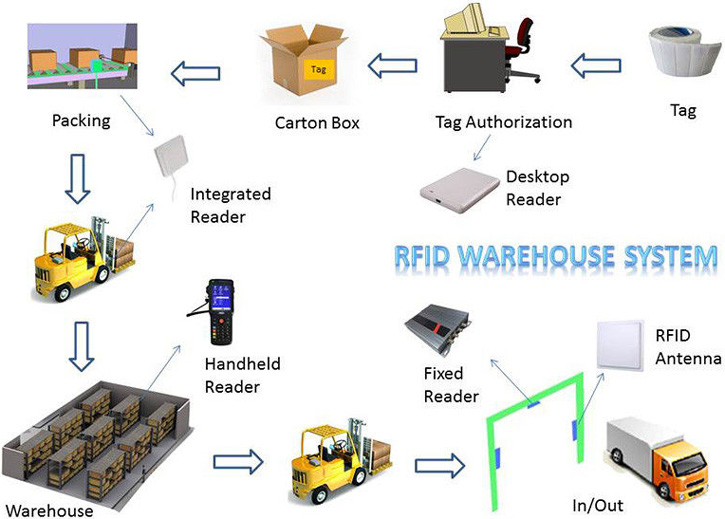What are the advantages of RFID warehouse management system?
However, the current actual situation of high cost and low efficiency in the warehouse link, through investigation of third-party logistics warehouse operators, factory-owned warehouse companies and other warehouse users, it is found that traditional warehouse management has the following problems:
1. The goods are about to be put into the warehouse, and the warehouse receipt has not been sent yet, so it cannot be put into work immediately.
2. The delivery vehicle has been away for a long time. After checking the inventory, it is found that the goods are still not in the warehouse.
3. The goods have been put in storage, but forgot to record the storage location or the wrong storage location is recorded, and it takes another half day to find the goods.
4. When leaving the warehouse, employees need to run back and forth in multiple warehouses to pick up the goods, and the waiting time for vehicles is long.
5. A plate is only a few days, so the efficiency is really low, and the efficiency is low, and there are frequent mistakes.
6. A large number of near-effect futures products can be counted every time the inventory is taken, and first-in, first-out has become empty talk.
The existence of the above warehouse problems has had an adverse impact on the development and operation of the enterprise, and it is necessary to urgently solve and improve the warehouse management level. The emergence of RFID warehouse management system provides enterprises with a more convenient, efficient and intelligent warehouse management mode.
So, facing the above warehouse problems, what are the advantages of the RFID warehouse management system?
1.UHF RFID tags
By issuing RFID electronic tags for each pallet and storage location in the warehouse, and with various special equipment, it can realize the automatic identification of pallet and goods storage information, which greatly facilitates the user to manage inventory goods.
At the same time, through the UHF RFID tag binding to the goods, it can accurately distinguish the actual management problems such as batch, model, product name, warehousing time, supplier, status, etc., and the management and control is more in line with modern management needs.
2. Receiving
Daily receiving tasks can be automatically synchronized to the RFID handheld device, and you can know the details of the task without paper receipts.
The receipt data does not need to be recorded manually, and the system automatically collects and counts to ensure the accuracy of the receipt data.
After the goods arrive in the warehouse, the system will automatically update the inventory quantity in the warehouse, and the documents will also become completed.
3. Shelf
After the RFID warehouse management system is integrated with the RFID forklift, the shelf tasks can be issued to the RFID forklift for execution.
The RFID forklift automatically scans the pallet, displays the pallet’s cargo information and warehousing information, submits the storage location of the cargo in real time, and increases the inventory on the shelf.
4. Picking
The system will automatically optimize the picking walking path, no need to walk back and forth, just one walk to finish picking goods.
RFID forklifts scan RFID pallet tags to quickly verify the information of outbound goods, and can perform first-in-first-out verification to improve inventory turnover.
After the outbound is completed, the outbound inventory is automatically reduced.
5. Inventory
There is no need for paper inventory receipts, and the RFID mobile work platform can wirelessly check the system receipts online.
There is no need to manually record the inventory data information, and the system supports on-site operation records.
The inventory accuracy reaches the location level and the pallet level, making the inventory easier to implement and carry out; support the inventory and the warehouse in and out business at the same time.
Combined with the use of RFID forklifts, the inventory speed is faster, and the inventory difference data is automatically summarized.
The application of the RFID warehouse management system greatly simplifies the daily operations of the warehouse, and the data becomes automatically collected and updated, eliminating the need for manual entry, thereby creating an intelligent and automated warehouse center for the enterprise to reduce costs and increase efficiency.
